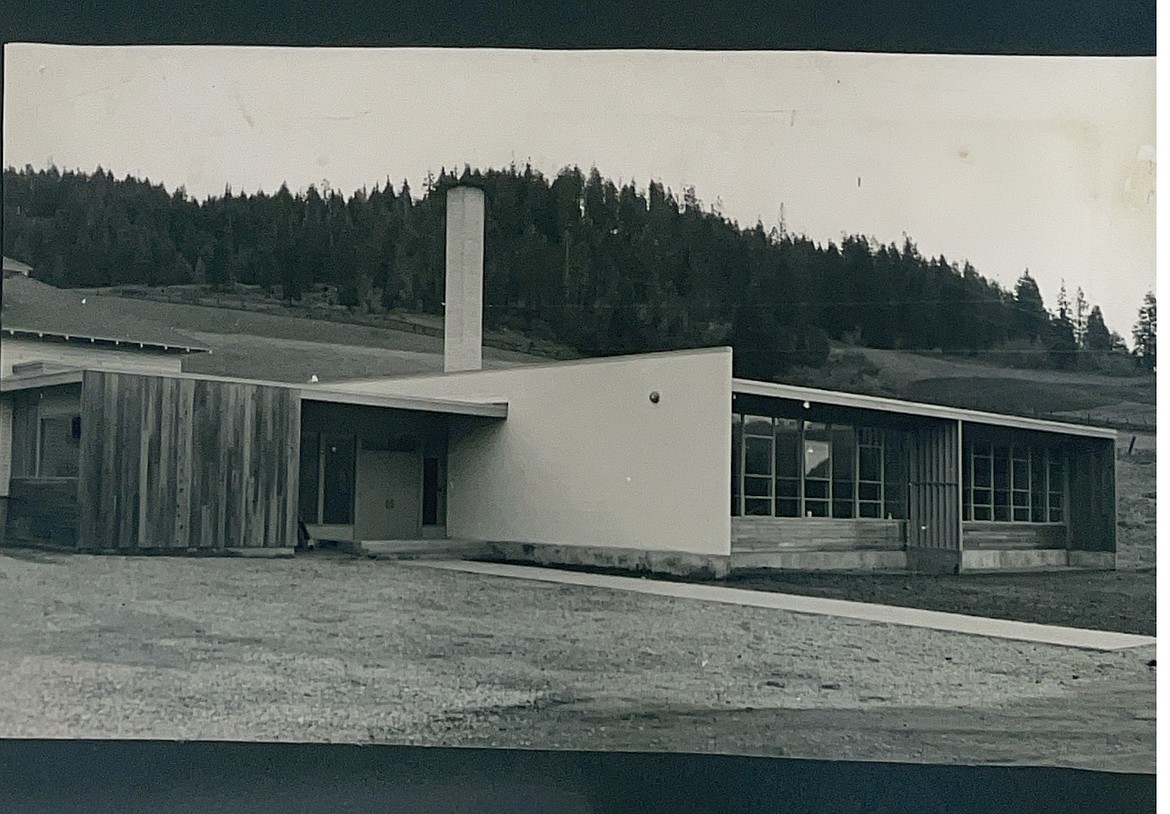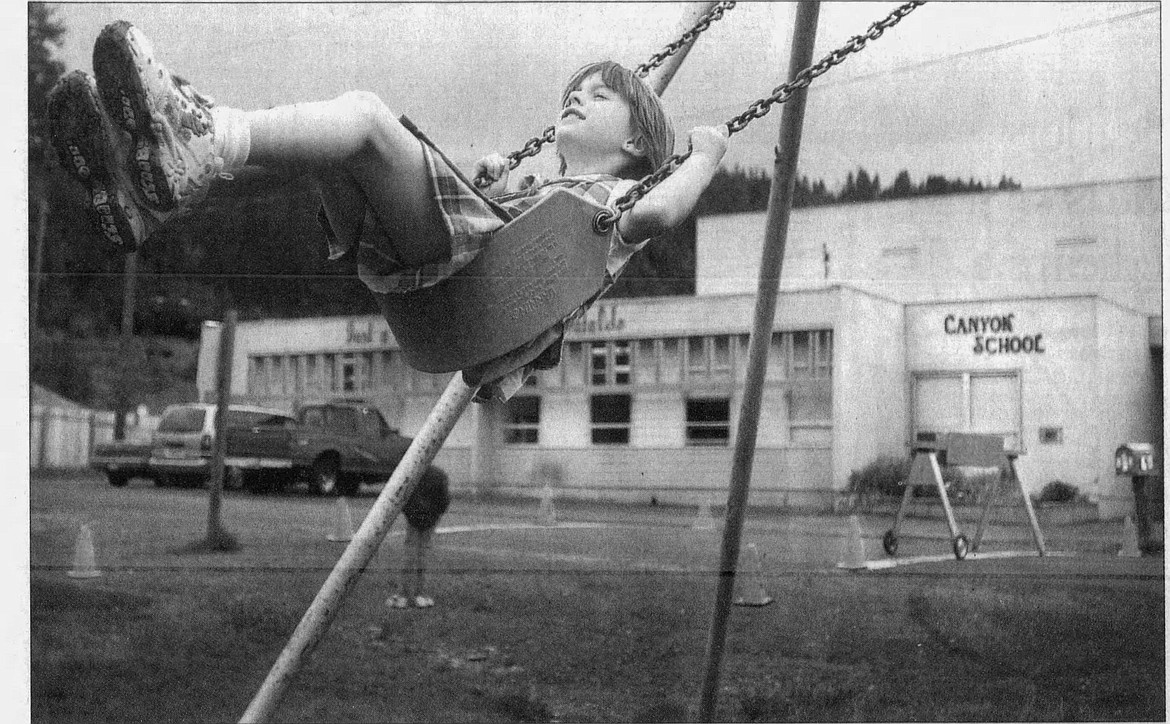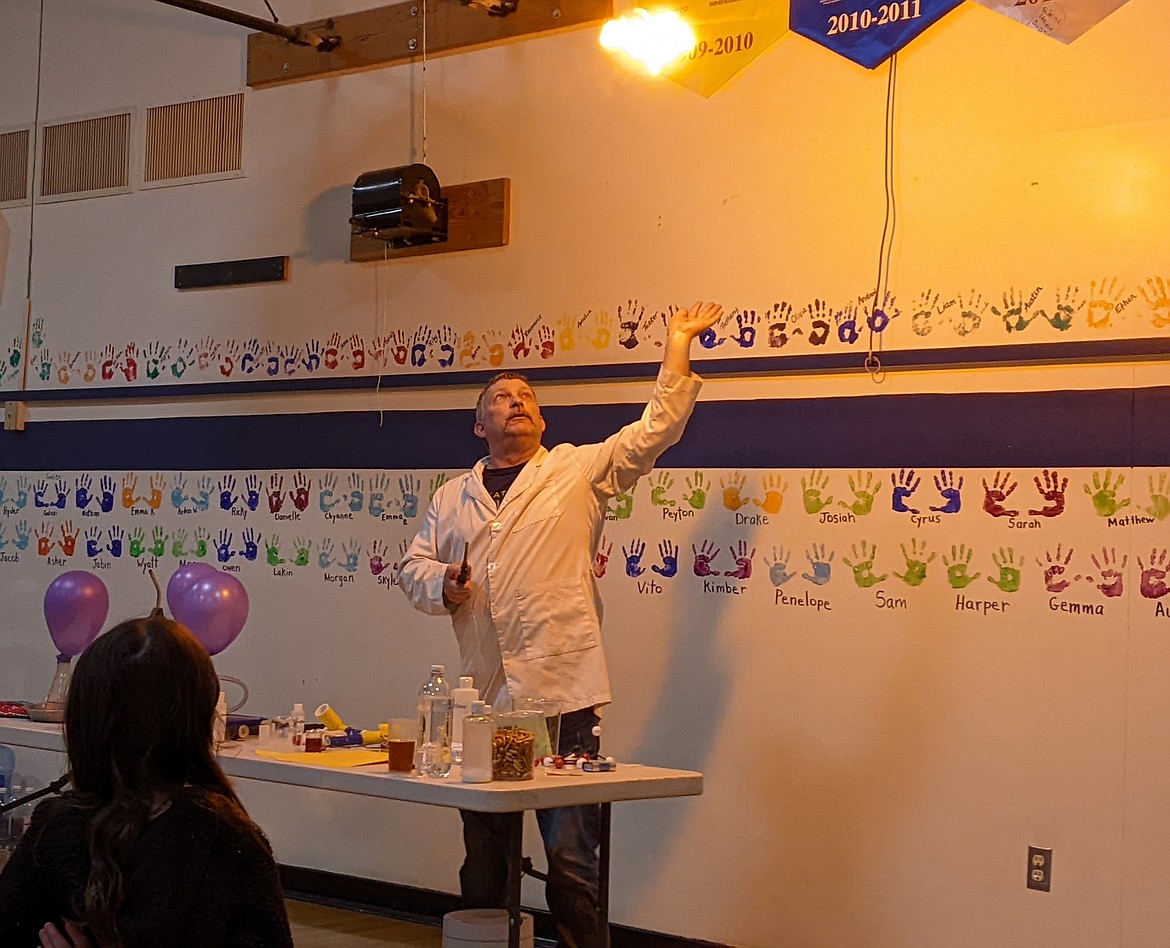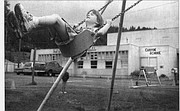Canyon Elementary: The Little Schoolhouse in Cataldo
CANYON — A small school, nestled in a beautiful location amongst the wildlife and flourishing flora, Canyon Elementary, more recently named Canyon Elementary Science Magnet School is among the gems of the area, despite not being located in Shoshone County. The school has been referenced as “the community background” and the “Little Schoolhouse in Cataldo.”
The school itself has a storied past, dating back to its inception in 1953. When the school was built, the Silver Valley was in an incredibly lucrative spot, with the local mines and mills in the area booming.
While the current iteration of Canyon Elementary School is nearing its 70th anniversary, Canyon Elementary School in name has existed for quite some time.
Originally located a few miles west of its current location, CES was one of many small schools throughout the region and served the community that had grown around the Fern Creek area. However, over the years, as money and population began to decline and folks moved out of the area, the need for so many schools was reduced.
According to archival records, in July 1953 a $1,750,000 bond was passed for the Kellogg School District that called for the construction of a senior high school in Kellogg; a junior high in Pinehurst; remodeling of the former Kellogg High School to be used as a school district administrative office; as well as a new school in the Cataldo area.
This school would serve the greater portion of Cataldo, including students in the Medimont area, as well as those on the western outskirts of Kingston — near the Shoshone/Kootenai County borders.
A few years later, the new Canyon Elementary School was built and ready to open its doors prior to the 1954-55 school year.
The school has always enjoyed being a smaller, rural school operating within a larger district, but there have been some tumultuous times for the building — some of them even recent.
Over the years CES has received some much needed upgrades, including in 1968 when a school bond was passed and the new gym was built as an addition to the original structure, and then again when the current kitchen was added in 1976.
Changes would come in all sorts of different forms – those include staffing, areas of focus, and even how the school would operate.
Jenny Ferreria, the current principal and educator at CES explained to the Shoshone News-Press that the school became a Science Magnet School in the year 2009. In the United States education system, magnet schools are public schools with specialized courses, in this case, courses related to STEM (Science, Technology, Engineering and Mathematics).
“You feel it when you walk in the doors,” Ferreira said. “Canyon is special for many reasons, but what sets it apart from other schools is the community’s support for the school and the passion of the staff members who work here.”
She went on to say that the fact that because the school is more rural, it creates the opportunity for a more tight-knit family vibe.
This can provide even more experiences for the students as parents and volunteers are always willing to step in and help out in different capacities. This can be volunteering to read to students, prepping materials, setting up and organizing classrooms, offering their skills to maintain or improve something in the building or on the grounds, or bringing a tractor or mowers as well as other pieces of equipment to improve the area of the playground, to donating materials and/or supplies to make improvements.
As with any small school in a district like the KSD, the idea has been thrown around on numerous occasions to shut down CES.
The first talks of closing CES came in 1985 after 55% of KSD patrons rejected a supplemental override levy, which required a majority for approval — at the same time enrollment was dropping across the district leaving administrators asking themselves if it was a good idea to keep the building open.
Leif Bretthauer, KSD’s assistant school superintendent at the time, pitched the idea that money could be saved by busing the sixth-graders from Canyon to Pinehurst Elementary, or by sending all sixth-graders in the district to Kellogg Junior High. Because of Canyon’s distance from Kellogg, the district receives extra state support for operating a “remote” school, provided enrollment stayed above 90 students. This made sense if they only moved the sixth-grade students, but to move both of their upper grades it would lower their enrollment to the point that closing would be required.
Around this same time, Kootenai School District trustees voted to close Rose Lake Elementary, a school in the Kootenai District about eight miles from Canyon that was deemed unsafe. The 47 students, ranging from kindergarten to fifth grade were transferred to Canyon Elementary school for the 1985-1986 school year.
Controversy continued in 1987, as the future of CES was once again in the balance as another levy cycle approached.
Concerns from parents at the time were that because the school is in such a rural area, the district was attempting to phase it out. The discussion was held on having all elementary students attend Pinehurst Elementary, and shutting down Canyon and Sunnyside schools if the levy failed.
Four years later, the district levy failed and it was decided that they would re-run it a few months later.
According to archival records, had that levy failed, “all librarians, after-school sports, music and art classes, developmental first grade, Canyon Elementary School, physical education, Junior ROTC, will be eliminated.”
Thankfully, all of these things were saved, surprising school officials with strong support for the supplemental levy — passing with 60.5% voting in favor, and Canyon’s precinct having the heaviest turnout.
The school rode that momentum until 2000 when school trustees voted 4-1 to close Canyon Elementary due to declining enrollment and the plan was made to bus the former CES to Pinehurst Elementary School.
Not willing to go down without a fight, Canyon-area residents were upset with this decision and dug up a little-known state law to demand a districtwide election. Out of 1,407 voters, 761 cast ballots to keep the school open.
In the years since, the Kellogg School District has examined and re-examined its facilities and even closed an elementary school — but it wasn’t Canyon.
Sunnyside and Pinehurst Elementary schools were merged in 2014, leaving Pinehurst and Canyon as the KSD’s two operating elementary schools.
When the decision was made in 2009 to change the focus of the school to a more STEM-related curriculum, then principal Sue Hanson-Barber, decided that creating a Science Magnet status made sense at Canyon because it offered the students of the Kellogg School District another option. This change also meant that students who lived within the school boundaries would attend the elementary school, however other students who had an interest in science could also apply and attend, as long as the space allowed for it.
The school itself is unique, with the gym acting as the cafeteria, some classrooms featuring multiple grades, and one of the most parent-involved student bases in the area — but there is a lot more than what meets the eye.
One of the most unique aspects of the school, at least according to Ferreira, is its nature trail. Developed and dedicated in 1989 by retired educator Kent Lunders, and built from timbers that were donated by Whiteman’s Lumber. The trail begins with a bridge that crosses Cougar Creek and winds through the area before returning to the school and is maintained by teachers and parent volunteers. This has become an extension of the classroom over the years, providing teachers and students with hands-on learning opportunities that are related to the environmental and life sciences.
Canyon is a very special place for Ferreira who was also a student there in her elementary years.
Ferreira explains that some of her favorite moments of working at Canyon are when parents and community members can be involved. An exciting aspect that has been added to the school is Science Fridays.
“Science Fridays are when we create multi-groups and we spend the entire afternoon rotating around hands-on learning stations on a certain topic,” Ferreira said.
The reason behind its favoritism is due largely because of the community and parental involvement that comes with it.
“We often have community members who are experts in our focus field to come in and run a station. We also invite parents to come in and rotate around the stations with their children. Science Fridays are exhausting and rewarding at the same time.”
The future of Canyon is seemingly always difficult to predict — but right now they are experiencing a season of growth.
“We have seen a significant increase in enrollment in the past year and a half,” Ferreria told the News-Press. “Last year, we saw quite a big jump in enrollment and ended the school year with 99 students. For the first time in over 20 years, Canyon had to employ a fourth teacher.”
But, only time can tell what changes to enrollment, and changes to the school will look like.
“One thing I can say for sure, in 10 years time Canyon will still be a school well-loved and supported by the community and staffed with top-notch individuals,” Ferreira said. “That’s the way it was when I was a student and I don’t see that changing anytime soon. It’s really impressive what difference a community who values their community school can make.”







